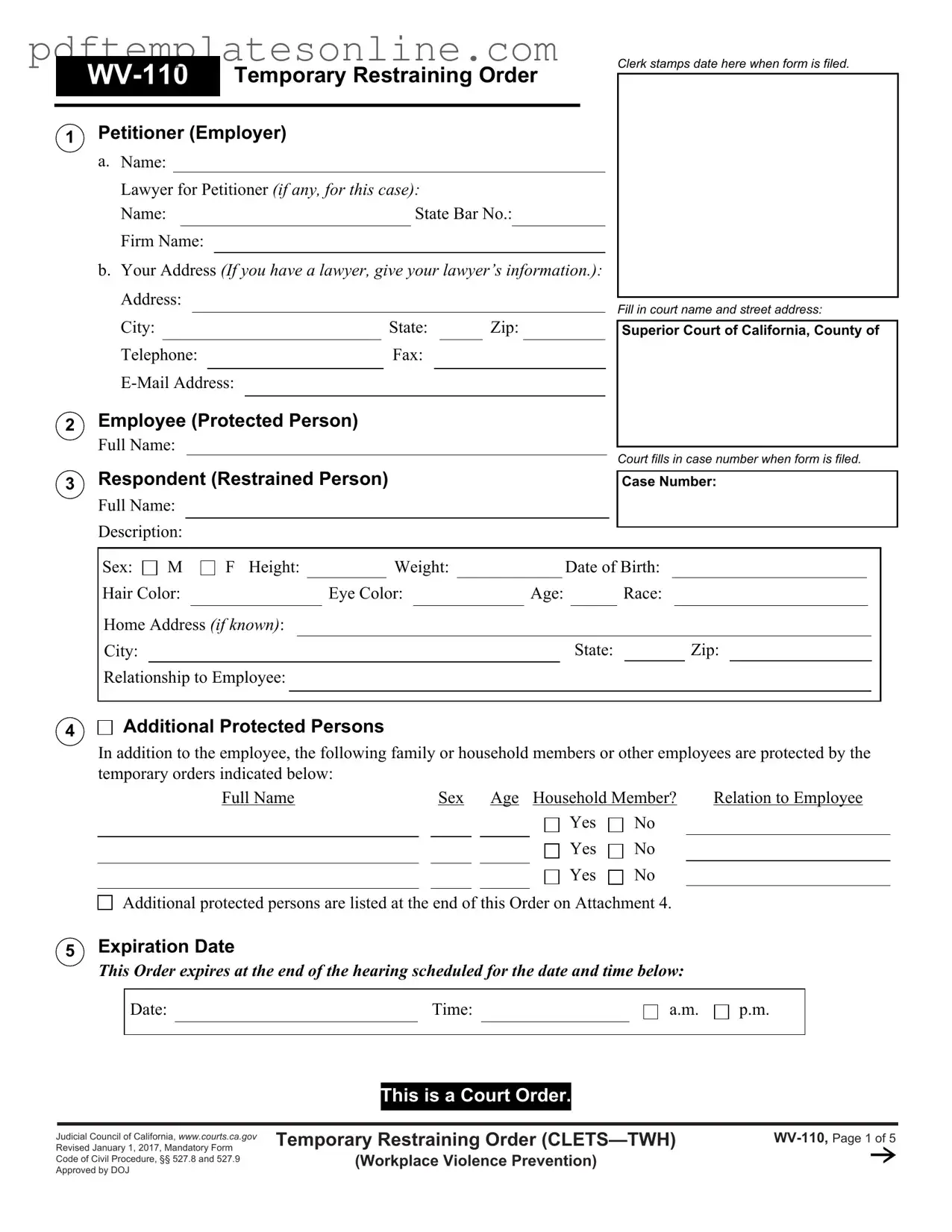Filling out a Fake Restraining Order form can lead to serious consequences. Many individuals make critical mistakes during this process, often due to a lack of understanding or attention to detail. Here are five common errors to avoid.
First, incomplete information is a frequent issue. When filling out the form, it is essential to provide full names, addresses, and other identifying details for both the petitioner and the respondent. Omitting this information can delay the process or even result in the dismissal of the order. Ensure that all required fields are filled out completely to avoid complications.
Second, people often fail to specify the relationship between the employee and the respondent. This detail is crucial as it helps the court understand the context of the situation. Without this information, the court may question the legitimacy of the request, which can lead to further legal challenges.
Third, individuals sometimes neglect to list additional protected persons. If there are family members or other employees who also need protection, they must be included in the form. This oversight can leave vulnerable individuals unprotected and may weaken the overall case for the restraining order.
Fourth, many applicants do not clearly outline the specific behaviors that warrant the restraining order. The form requires a detailed account of the actions that prompted the request. Vague descriptions can lead to confusion and may not meet the legal standards needed for the order to be granted. It is vital to be specific and factual about the incidents in question.
Finally, a common mistake is failing to adhere to deadlines. The form has strict timelines for filing and responding. Missing these deadlines can jeopardize the entire process. It is important to keep track of all dates related to the filing and any subsequent hearings to ensure that the order remains valid and enforceable.
By avoiding these mistakes, individuals can increase their chances of successfully obtaining a restraining order. Attention to detail and a clear understanding of the requirements are key to navigating this legal process effectively.
